Having been within the yoga world for greater than 20 years, I’ve observed a correlation between the quantity of people that observe yoga who’re additionally acquainted with some type of Buddhism, like Zen meditation.
Though the origins of yoga hint again to Hinduism, there may be an simple connection between yoga’s religious and bodily observe and Buddhism. In spite of everything, Buddha himself is the mannequin of yogic meditation, typically seen sitting within the well-known Lotus posture.
So, the place do yoga and Buddhism intersect? Have you ever ever puzzled if Buddhism and yogic observe are related? This mix of traditions sparks a rising curiosity amongst yogis within the West.
Buddhist yoga and meditation mix the pursuit of enlightenment with bodily asanas and mindfulness observe, a synthesis that has captivated many individuals who observe yoga in the present day.
Let’s discover these two techniques of philosophy and delve into the character and variations of philosophy towards interior peace by meditation and asanas.
Philosophical Foundations of Yoga and Buddhism
Yoga is deeply rooted in Hinduism and shares philosophical ties with Buddhism by the advaita vedanta faculty of thought. Advaita and Buddhism every emphasize the non-dual nature of actuality; there isn’t any separation between one’s true self and supreme actuality.
Equally, Buddhism and yoga discover the character of existence by meditation, ideas like dharma, karma, and non-attachment philosophy. Classical yoga observe and Buddhism share the aim of religious liberation: yoga by motion and Buddhism by meditation thoughts work.
Buddhist rules once more overlap with points of yoga philosophy relating to struggling as an inevitable state of human expertise. Fortunately, each the Yoga Sutras and Buddhism provide options and instruments for shifting past struggling and into self-realization.
These enduring yoga traditions and yoga practices share parts with Buddhism, though there are additionally essential variations in philosophy.
Dharma’s Significance
Dharma is a big idea in yoga, Buddhism, and Hinduism, significantly throughout the philosophies of Vedanta and Advaita, as expounded within the Upanishads. It’s about residing righteously and fulfilling your ethical responsibility.
In yoga philosophy, it means following your life’s objective. Hinduism followers see it as residing in accordance with the teachings of Vedanta and yoga philosophy, very similar to Buddhists view it by the Yoga Sutras and Buddha’s teachings.
Struggling as a Begin
Life’s powerful, no joke there. Struggling, or Dukkha in yoga philosophy, is the place many start their religious quest, typically exploring the Samkhya custom and finding out the Yoga Sutras, resulting in a observe of meditation.
Yoga makes use of this discomfort to push for self-improvement. Buddhism, just like the yoga philosophy discovered within the yoga sutras, begins right here, too, saying life’s struggling, when approached with meditation and Vedantic rules, can result in enlightenment.
Non-Attachment Pillar
Letting go is vital in each traditions. Non-attachment helps yogis keep calm in chaos. For Buddhists, it’s about ditching wishes that trigger ache.
Historic Ties Between Yogic and Buddhist Traditions
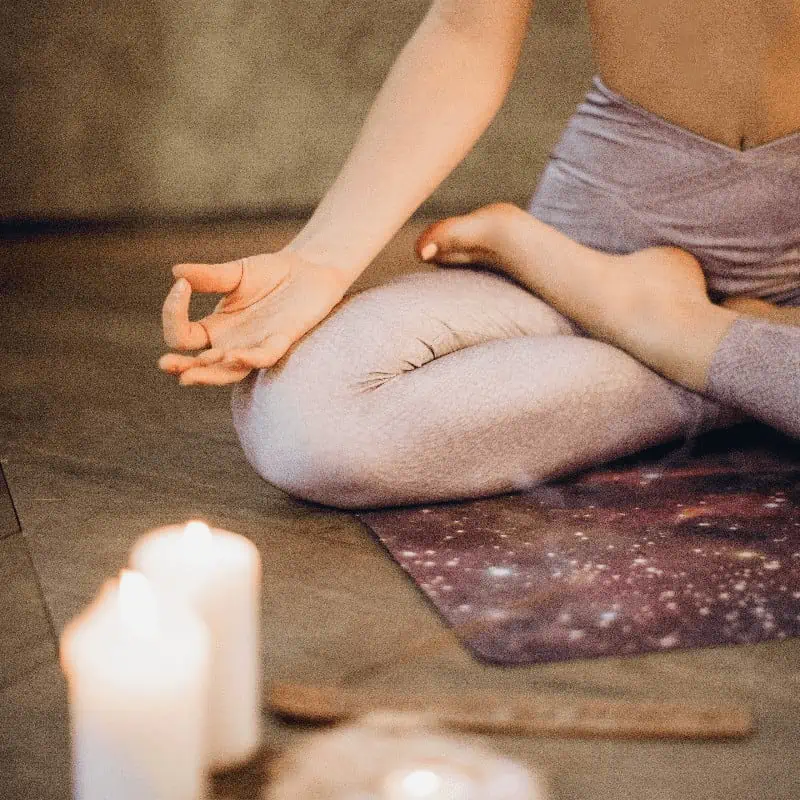
Yoga and Buddhism share deep historic roots. India’s historic ascetic practices formed each.
Historic Indian Influences
The religious soil of historic India and the Vedanta philosophy of Hinduism nurtured each Buddhist and yogic traditions. Buddhism and the Samkhya faculty of Hindu philosophy have origins relationship again to India’s 4th or fifth century BCE.
Ascetics looking for enlightenment cultivated self-discipline of their practices, just like some yoga traditions just like the devoted devotion of Bhakti Yoga or Raja Yoga, which focuses on the yoga sutras and meditation.
Buddhist yoga is a testomony to centuries of religious improvement, reflecting origins in several traditions and evolution by texts just like the Upanishads, Yoga Sutras, and Mahabharata.
Buddha’s Yogic Journey
Earlier than changing into the Buddha, Siddhartha Gautama was a yogi. His quest for fact led him by rigorous yogic coaching, exploring the Yoga Sutras and Upanishads and deepening his observe with Samkhya philosophy and meditation.
Syncretism in Monastic Life
Buddhist monasteries and yogic communities typically shared area — and concepts. Syncretism is the fusion of various traditions, perception techniques, or colleges of thought. Over centuries, this early syncretism cast sturdy bonds between the traditions of the Upanishads, the Yoga Sutras, and Buddhism.
Defining Buddhist Yoga and Its Practices
Buddhist yoga merges meditation with bodily actions. Mindfulness is its core.
Meditation Meets Motion
Buddhist yoga isn’t solely about your physique. It’s an train on your thoughts. Zen meditation practices contain breath consciousness, just like mindfulness meditation, which we generally use in a yoga class.
On the finish of a Zen session, practitioners rise and stroll gently across the room with targeted breath management to progressively emerge from their meditative state. In classical yoga, every pose is paired with deep respiratory practices and a concentrate on the current second, akin to a standing, shifting meditation.
Mindfulness in Movement
Think about strolling however being conscious of each step, breath, and breeze — mindfulness in motion, attuning your physique to the current second.
Now, apply that to yoga. With every motion, you’re conscious of each muscle in your physique and each thought that arises. You observe Buddhist yoga while you transfer by your asana observe with this conscious consciousness.
The Eightfold Path Information
The Eightfold Path, derived from the Yoga Sutras, is sensible recommendation rooted in historic traditions and texts for residing properly by particular practices. It guides you to undertake practices that encourage the best thought, moral residing (dharma), and proper motion (karma).
You’ll discover the identical mannequin within the Noble Eightfold Path in Buddhism. These techniques are fairly related, though they emphasize totally different practices. Every goals to supply a path for each particular person, from struggling to eventual self-realization.
Every Eightfold Path — within the Yoga Sutras and Buddhism — teaches beneficial rules, like cultivating compassion and different traditions you possibly can observe on and off your yoga mat.
Dynamic Mindfulness in Buddhist Yoga
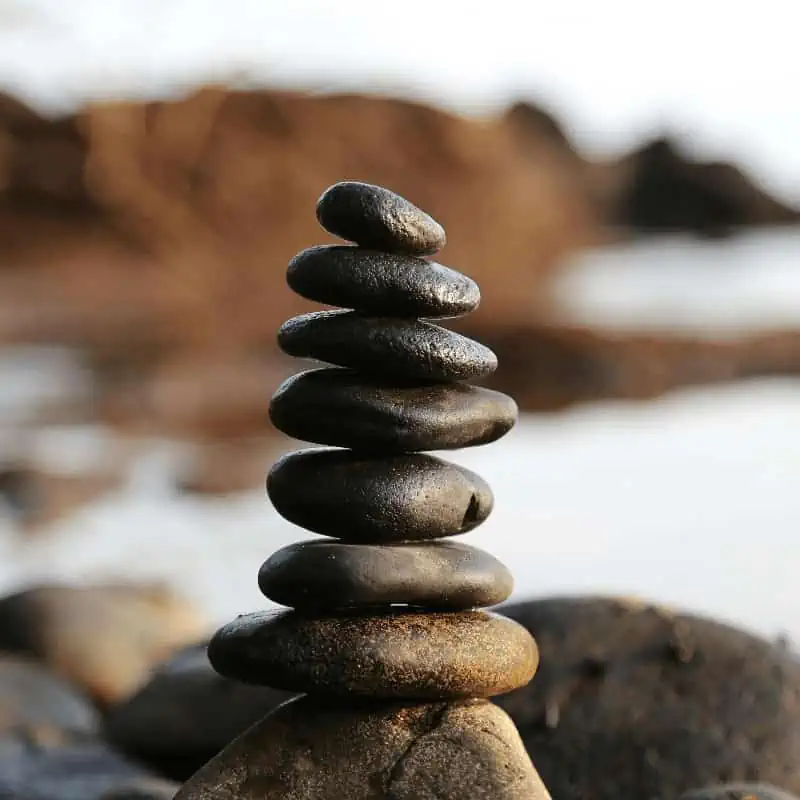
Buddhist yoga blends motion with sharp psychological focus. Meditation doesn’t must be a technique of emptying your thoughts. As an alternative, use it to pay attention intently on sure points of your yoga observe, like breath management or the method of shifting from one asana to the subsequent.
Cultivating Consciousness
I like to inform my college students that yoga is a technique of assembly your self precisely the place you’re, second to second. In essence, that’s what Buddhism is all about — present-moment consciousness.
In Buddhist yoga observe, each transfer you make is an opportunity to strengthen the event of your consciousness. We nonetheless use these historic methods from the fifth century BCE — they’re efficient and wanted extra in the present day than ever!
Breath as an Anchor
In yogic observe, breath management is crucial. Your breath retains you glued to the now. Every inhale and exhale in your yoga observe is sort of a lighthouse guiding boats by the murky waters of actuality — preserving your consideration from crashing into daydreams or worries.
Watching Psychological Patterns
Have you ever ever observed how your ideas love enjoying tag? Within the Twenty first-century practices of Buddhist yoga, you’re “it,” attempting to tag each. The sport? Recognizing what pops into your head throughout yoga practices with out getting swept away by the story of the century.
To strive some thought or breath consciousness mindfulness practices, head to Headspace.com and take a look at their quite a few guided meditations.
The Physique in Buddhism and Yoga Views
In Buddhist yoga practices, the physique is greater than flesh and bones; it’s a vessel for enlightenment within the Twenty first century. Respecting its limits is significant to religious progress.
Physique as Enlightenment Car
Buddhist yoga, a observe with centuries-old roots, sees the physique as an important ingredient on the trail to enlightenment. It’s not nearly being match or wholesome.
As an alternative, consider your physique like a automotive on your thoughts—it must be cared for with practices like yoga to get you the place you need to go, on this case, the state of whole consciousness and peace.
Aware Acceptance
Understanding our bodily boundaries isn’t about giving up. It’s about getting sincere with our yoga observe and dealing inside these traces. When your muscle groups scream throughout a difficult yoga pose, it’s not defeat; it’s knowledge whispering to take it simple.
Postures for Meditation Preparation
Yoga postures (asanas) are like pre-game stretches for meditation train —they put together your thoughts for deep focus. By shifting by these asanas, you’re establishing the dominoes in order that all the things falls into place excellent while you meditate after your yoga session.
Physique Idea Misinterpretation
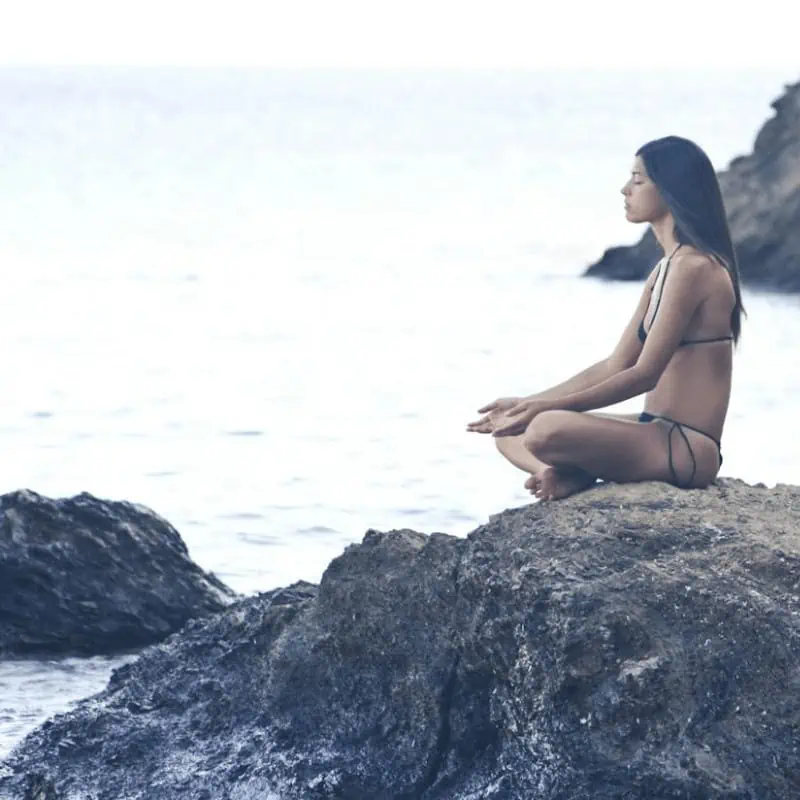
Buddhism doesn’t label our our bodies as inherently impure. Quite the opposite, our particular person fixations can journey us up on the trail to religious liberation.
A Pure Physique
In some religions, individuals consider the physique have to be purified for salvation to happen. Buddhism, nevertheless, views people as inherently excellent beings throughout the physique’s vessel. A temptation in yoga asana might come up to cling to our our bodies’ bodily kind, impeding religious progress.
As an alternative, think about your physique as a car on your yoga observe – it’s not dangerous in itself, however if you happen to’re obsessive about having the flashiest yoga poses and might’t cease exhibiting off, you may overlook the true objective of your yoga journey.
Attachment Hinders Progress
Practising yoga teaches us that getting too connected to how we glance or really feel throughout asanas can drag us down. It’s like being caught in quicksand; the extra you obsess over your appears, the deeper you sink away out of your interior peace and the essence of your yoga observe.
In each Buddhist yoga and conventional teachings, they are saying this attachment is a serious no-no as a result of it retains us from reaching our true potential.
Cultural vs Doctrinal Views
There’s a ton of cultural fluff on the market mixing up what Buddhism says about our our bodies and the observe of yoga. Some people assume sure practices like yoga or beliefs are straight from Buddha himself after they’re simply native customs dressed up in religious garments.
Buddhist and yoga traditions complement each other and even overlap in some points. Nevertheless, every system has its personal philosophy, practices, and traditions. Probably the most essential distinction is that Buddhism and Hinduism are world religions, whereas yoga is a philosophy.
The Evolution of Yoga and Its Intersection with Buddhism
Yoga’s journey has been lengthy, from historic Vedic roots to the modern-day. It’s a story of cultural mingling and religious evolution, the place Buddhism and yoga have performed a key position.
Yoga’s Historic Roots
Yoga dates again hundreds of years. Yoga began in the course of the BCE period as a various set of practices.
Buddhist Affect
By the primary millennium CE, Buddhism started shaping yoga. Concepts like karma influenced yogic philosophy.
Cultural Change
The phrase “yoga” took on new meanings by cross-cultural interactions. Hinduism and Buddhism each contributed to this mix.
Trendy Yoga’s Reception and Numerous Traditions
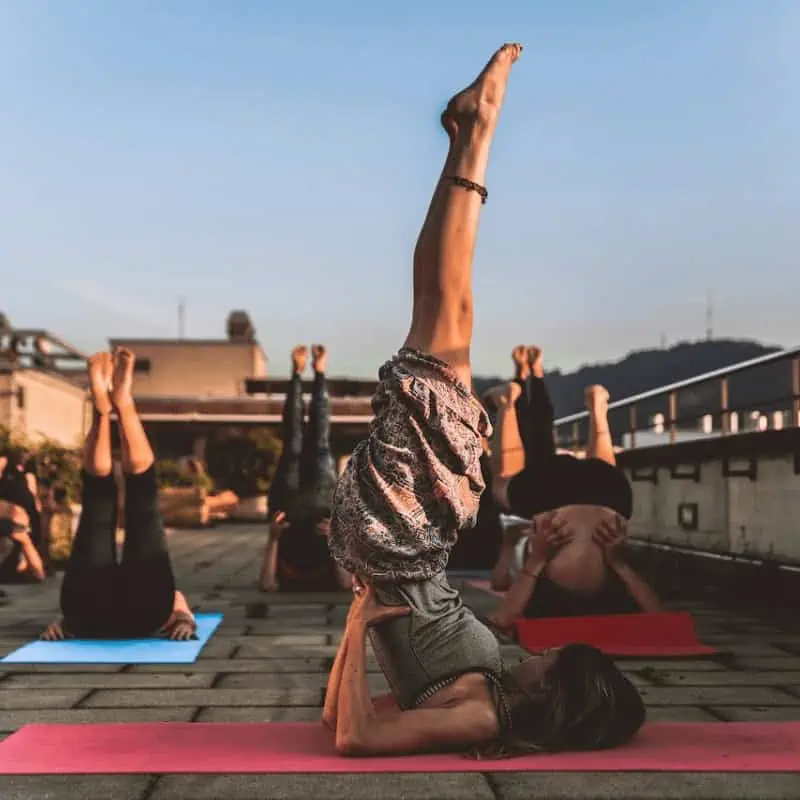
Yoga has unfold worldwide, with numerous traditions rising. The worldwide adoption of yoga, particularly within the West, contrasts with its Asian origins, sparking debates on authenticity.
International Adoption Charges
Yoga has actually gone world. You’ll discover people flowing into yoga asanas from bustling cities to quiet cities. With the event of yoga’s bodily observe all through the world, different colleges of thought, like Buddhism, additionally made their method West.
Conventional vs. Trendy
In Asia, yoga typically comes with a aspect of spirituality. Practising yoga is like your morning espresso paired with a soul-stirring dawn—each important for beginning the day proper. Buddhist yoga is a part of this wealthy custom, the place meditation and mindfulness are as necessary as nailing that warrior pose.
Within the West, many individuals undertake yoga as train and are available to religious practices later. That is the place the fusion of Buddhist yoga helps introduce a religious connection and meditation practices.
Aligning With Buddhism
Many fashionable yogis hold near the roots of Buddhism — compassion and karma. They honor historic practices whereas sporting the most recent eco-friendly yoga mats. These branches hold the essence of classical yoga alive in in the present day’s fast-paced world.
Blended Practices Debate
The yoga world isn’t shy about stirring the pot, both. Some purists consider in sticking strictly to the yoga custom. Others desire to sprinkle in some creativity. And why not? Mixing totally different traditions is gorgeous and should assist draw much more individuals to start working towards yoga or meditation.
Approaching Meditation By way of Buddhism and Yoga
Buddhist yoga blends mindfulness and focus. Mindfulness, or Vipassana, is about being current. Focus, or Samatha, sharpens the thoughts’s focus.
Yoga Helps Depth
Yoga practices improve meditation with correct posture. Aligned asanas make extended sitting a breeze. In Buddhist Zen meditation, the normal posture to make use of is Lotus Pose, or a supported kneeling place.
Mantra Use
Mantras bridge Buddhist and yogic practices. The phrases and language might differ, but they share the identical objectives of utilized focus, devotion, and religious liberation.
Philosophy Enriches Follow
Buddhist philosophy deepens modern yoga methods. It provides layers of which means to every yoga class.
Private Exploration Inspired
Dive into this built-in path your self. Uncover private interior peace and understanding by common observe.
Future Instructions Mirrored
The fusion of Buddhism and yoga is evolving. Monasteries and retreats are incubators for progress.
Conclusion
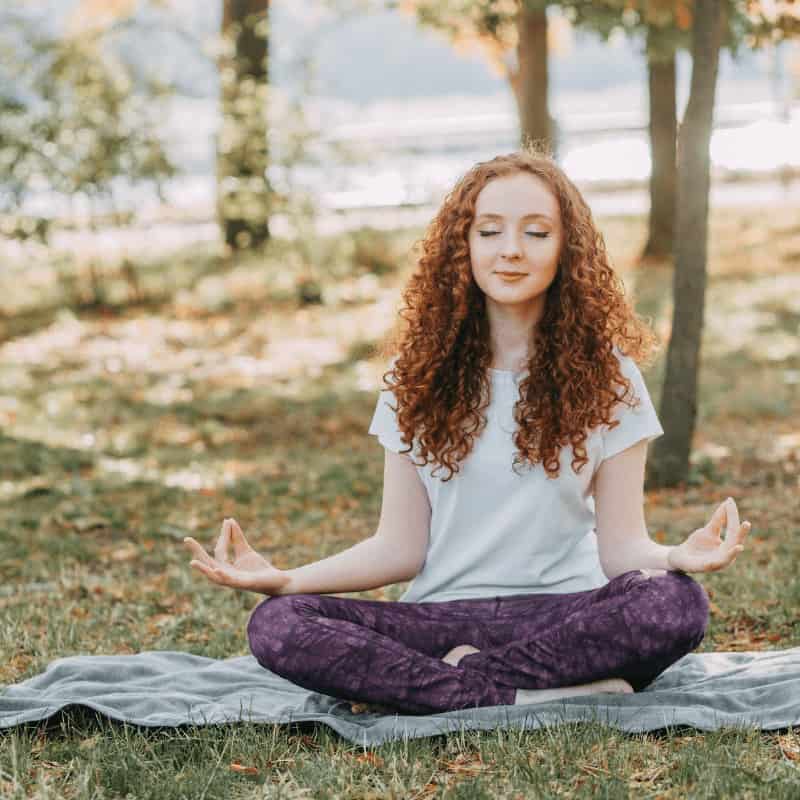
In mixing historic traditions, Buddhist yoga stands out, weaving collectively the threads of mindfulness and bodily self-discipline. We’ve journeyed from the roots of yoga, the place philosophy meets observe, to fashionable interpretations that stretch throughout cultures.
You’ve seen how dynamic yoga mindfulness shapes the body-mind connection and why misconceptions about purity in yoga can journey us up. It’s clear now that Buddhist yoga isn’t simply train however a path to interior peace.
So, what’s your subsequent transfer? Dive deeper into this transformative observe! Whether or not you’re a seasoned yogi or new to the mat, let Buddhist yoga problem and alter you. Attempt a free 2-week trial of Yogaworks.com and take a look at a few of their yoga and meditation lessons.
Roll out your yoga mat, take a deep breath, and step right into a world the place each yoga asana is a meditation and each breath is a step towards enlightenment. Get able to bend not simply your physique however your perceptions as properly.
FAQs
What’s Buddhist yoga?
Buddhist yoga is a observe that integrates conventional Buddhist philosophy with bodily postures (asanas) and respiratory workouts to boost mindfulness and religious improvement.
Can anybody observe Buddhist yoga?
Completely! You possibly can observe Buddhist yoga to domesticate mindfulness, compassion, and interior peace no matter your background or beliefs.
How does Buddhist yoga differ from different kinds of yoga?
Buddhist yoga focuses extra on meditation and the thoughts’s position in struggling and liberation, whereas different kinds of yoga might emphasize bodily health or flexibility.
Do I must be a Buddhist to learn from Buddhist yoga?
In no way. The rules of mindfulness and consciousness in Buddhist yoga are common and might profit anybody seeking to enhance their psychological readability and emotional well-being.
What ought to I count on in a typical Buddhist yoga session?
Count on a mix of meditation, chanting, yogic breath work, and light yoga postures to harmonize physique and thoughts.
How typically ought to I observe Buddhist yoga for the most effective outcomes?
Consistency is vital. Even when transient, common each day yoga observe is best than occasional lengthy yoga classes. Begin with what suits your schedule and develop from there.


